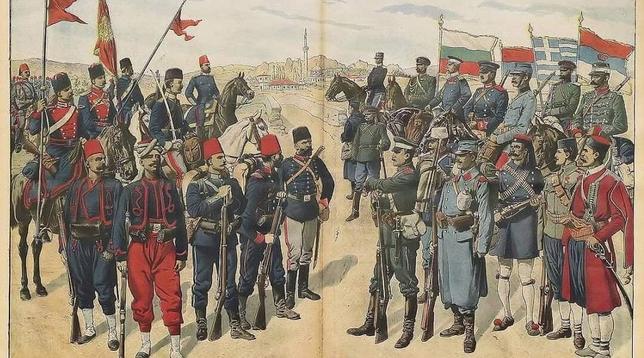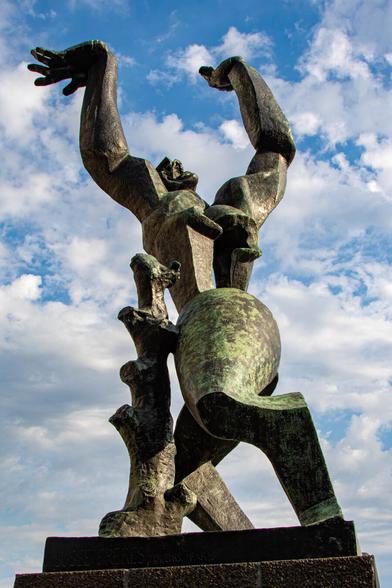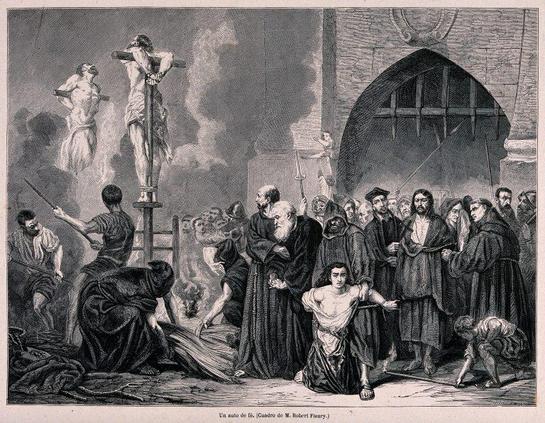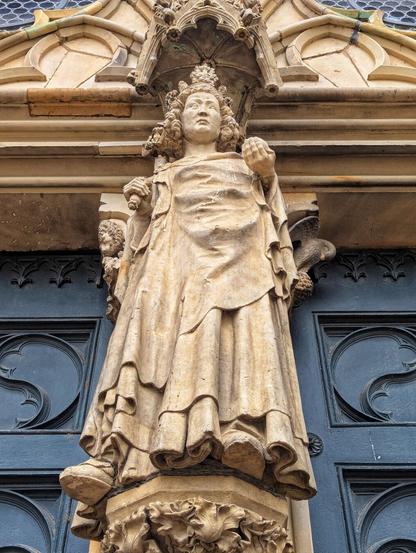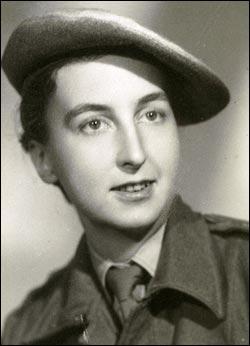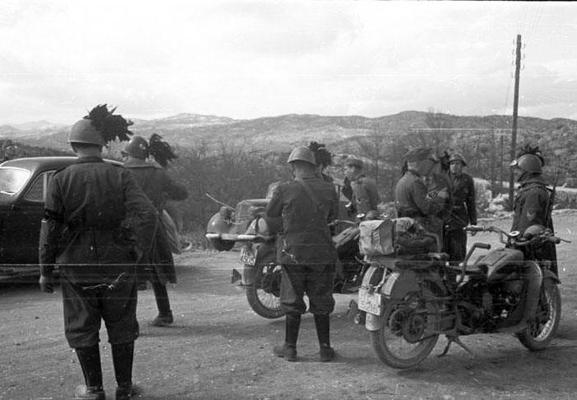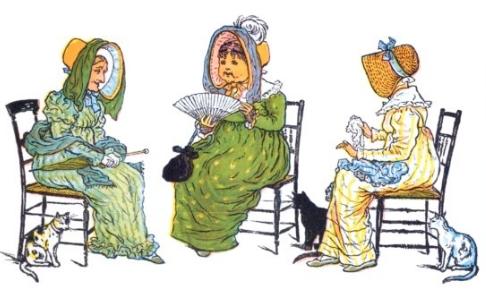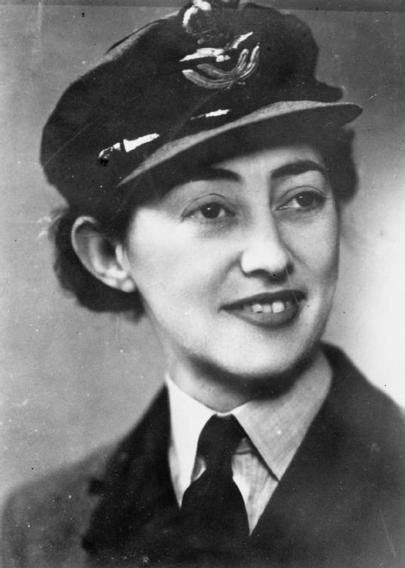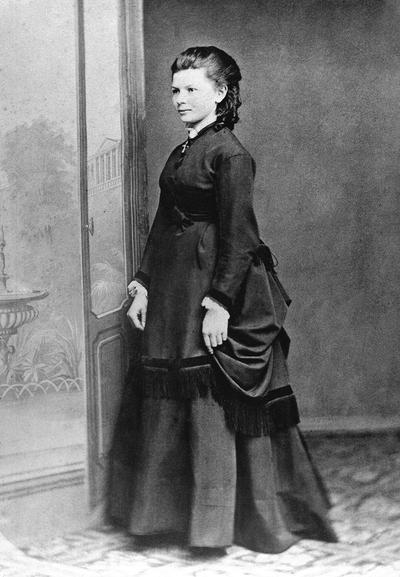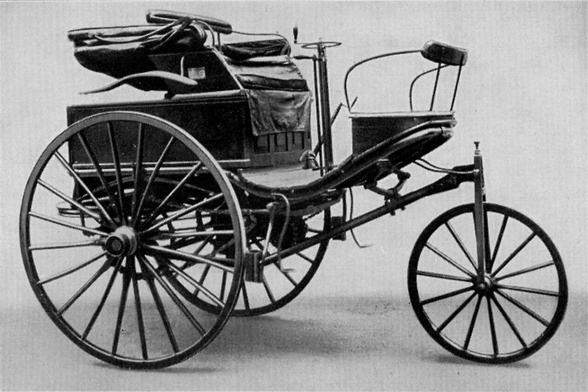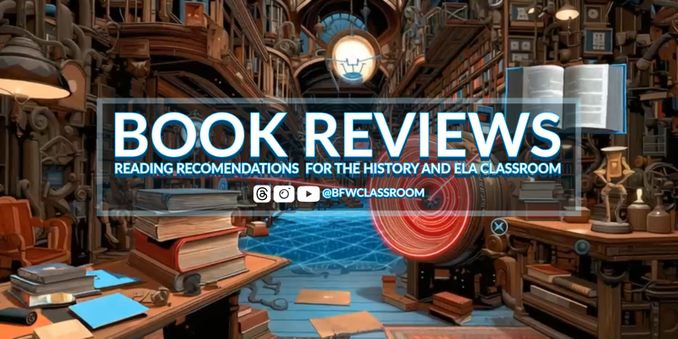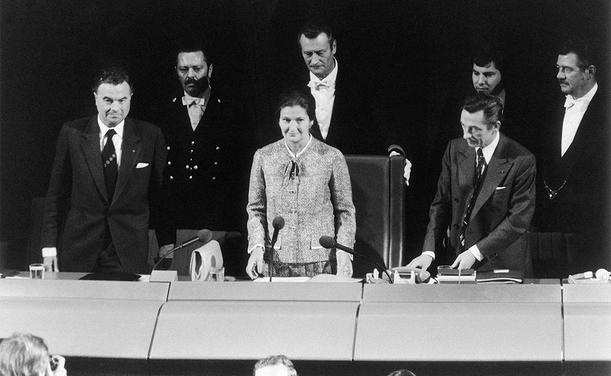𝗙𝗮𝗺𝗼𝘂𝘀 𝗠𝗮𝗿𝗶𝗲 𝗔𝗻𝘁𝗼𝗶𝗻𝗲𝘁𝘁𝗲 𝗣𝗼𝗿𝘁𝗿𝗮𝗶𝘁 𝗔𝗰𝘁𝘂𝗮𝗹𝗹𝘆 𝗜𝘀 𝗛𝗲𝗿 𝗦𝗶𝘀𝘁𝗲𝗿
Revealing a great historical error, Oxford professor reveals famous Marie Antoinette portrait actually depicts her sister Maria Carolina, based on evidence that has been staring everyone in the face.
#MarieAntoinette #europeanhistory #AncientOrigins
https://www.ancient-origins.net/news-history-archaeology/marie-antoinette-portrait-00102200
#EuropeanHistory
Перша Балканська війна: шлях до занепаду Османської імперії
https://buymeacoffee.com/valdeloir/mofayapime
#БалканськіВійни #ПершаБалканськаВійна #ОсманськаІмперія #БалканськийСоюз #ІсторіяЄвропи
#BalkanWars #FirstBalkanWar #OttomanEmpire #BalkanLeague #EuropeanHistory
Suffer a Witch to Live? Religious Conflict and Witchcraft Persecutions; or, No One Expects the Inquisition
https://digpodcast.org/2025/09/28/inquisition/
#Uncategorized #16thCentury #17thCentury #18thCentury #EuropeanHistory #spooky #witchcraft #witches #WomensHistory #podcast #histodons #history @histodons
Otto I. (oder ganz bescheiden Otto der Große), hier als Statue am #Dom der #Ottostadt Magdeburg.
Otto (912–973), König der Ostfranken, gründete 962 das Heilige Römische Reich und etablierte ein auf der Kirche (hurra) basierendes Herrschaftssystem, das das deutsche Königreich einigte und stabilisierte und Mitteleuropa über Jahrhunderte prägte. Magdeburg war eine der wichtigsten Städte in Ottos Reich und sowohl seine erste Frau Editha/Edgitha/Edith/Eadgyth/Edgith (die Magdeburg als Morgengabe erhielt) als auch er wurden im Vorgängerbau des Magdeburger Doms bestattet.
Ein weiterer wichtiger Otto für Magdeburg ist Otto von Guericke, Erfinder, Physiker und Bürgermeister aus dem 17. Jahrhundert, aber den heben wir uns mal für einen anderen Tag auf.
//
Otto I. (or, very humbly, Otto the Great), seen here as a #statue on #MagdeburgCathedral.
#Magdeburg gave itself the nickname "Ottostadt" (the City of Otto) to remember the great Emperor. Otto (912–973), King of East Frankia, founded the Holy Roman Empire in 962, unified the German kingdom through military victories and political reforms, and established a powerful church-based system of governance (yay us). He shaped Central Europe for centuries to come and was laid to rest in the predecessor of Magdeburg #Cathedral next to his first wife Eadgyth (who received Magdeburg as dower), after the city became one of his most powerful courts.
Another important Otto for Magdeburg is Otto von Guericke, 17th century scientist, inventor, physicist and mayor. But that's a story for another day.
#StatuenSamstag #StatueSaturday #OttoDerGroße #OttoDerErste #MagdeburgerDom #Kirche #church #HRR #HolyRomanEmpire #HeiligesRömischesReich #Mitteldeutschland #SachsenAnhalt #DeutscheGeschichte #Geschichte #EuropäischeGeschichte #GermanHistory #history #EuropeanHistory #Gotik #Gothic #Architektur #architecture
Very early #OnThisDay, 23 Sept 1943, Pearl Witherington parachutes into Nazi-occupied France as a Special Operations Executive courier. The British SOE supported the French Resistance. A courier was tasked with moving papers and equipment around their network.
Witherington takes over leadership of her network, eventually commanding 1,500 maquis and overseeing the surrender of 18,000 German troops.
#WomenInHistory #OTD #History #WomensHistory #EuropeanHistory #WorldWar2 #Histodons
𝗧𝗵𝗲 𝗙𝗼𝗿𝗸'𝘀 𝗧𝗵𝗼𝘂𝘀𝗮𝗻𝗱-𝗬𝗲𝗮𝗿 𝗝𝗼𝘂𝗿𝗻𝗲𝘆 𝘁𝗼 𝗘𝘂𝗿𝗼𝗽𝗲
The humble fork took 1000 years to travel from Byzantine Constantinople to European dining tables! Discover how royal marriages, cultural rebellion, and moral outrage shaped the surprising history of this now-essential utensil that was once considered scandalous.
#AncientHistory #AncientOrigins #byzantine #europeanhistory
https://www.ancient-origins.net/news-history-archaeology/medieval-forks-0022469
This is an interesting piece about the 'Other Europe' which saw upheavals from 1986 to 1991 redraw national boudaries. Yet the changes in 'Central Europe' are far from set in stone, esp in Ukraine after its invasion by Russia. History is being written still all along that divide between modern western democracies and the eastern mafia States.
#EuropeanHistory #CentralEurope
#EuropeanPolities #WarsAndEmpires
𝗛𝗼𝘄 𝘁𝗵𝗲 𝗦𝗹𝗮𝘃𝗶𝗰 𝗠𝗶𝗴𝗿𝗮𝘁𝗶𝗼𝗻 𝗥𝗲𝘀𝗵𝗮𝗽𝗲𝗱 𝗖𝗲𝗻𝘁𝗿𝗮𝗹 𝗮𝗻𝗱 𝗘𝗮𝘀𝘁𝗲𝗿𝗻 𝗘𝘂𝗿𝗼𝗽𝗲
Genetic research has revealed how Slavic peoples transformed Central and Eastern Europe in the medieval period. Ancient DNA from over 550 genomes shows huge population movements that reshaped the continent's cultural and linguistic landscape forever.
#slavic #slavs #europeanhistory #ancienthistory
https://www.ancient-origins.net/news-evolution-human-origins/slavic-migration-0022406
Whispers and Wives’ Tales: A History of Women & Gossip in Premodern Society
#WomensHistory #16thCentury #17thCentury #18thCentury #19thCentury #BritishHistory #EuropeanHistory #MedievalHistory #SocialHistory #WomensHistory #podcast #histodons #history @histodons
#OnThisDay, 22 Aug 1943, Yvonne Cormeau parachutes into France to be a radio operator for the British Special Operations Executive. The SOE supported the French Resistance to Nazi occupation.
She worked for 13 months and was never captured. You can hear her story on the Imperial War Museum site. https://www.iwm.org.uk/collections/item/object/80007171
#WomenInHistory #OTD #History #WomensHistory #WorldWar2 #EuropeanHistory #Histodons
FEATURED JOB: Assistant Professor in Modern European History [Tenure-Track] Department of History, College of the Holy Cross - Massachusetts
https://networks.h-net.org/jobs/68956/assistant-professor-modern-european-history
The Alps aren’t just mountains.
They’re:
A fortress that shaped Europe’s borders
A water tower feeding 4 major rivers
This is Europe’s Great Wall:
🔗 https://www.ryanjhite.com/2025/08/03/europes-great-wall-how-the-alps-shaped-a-continent/
#Alps #Geography #ClimateCrisis #EuropeanHistory #MontBlanc #Hydropower #Geopolitics
#OnThisDay, 5 Aug 1888, Bertha Benz drove from Mannheim to Pforzheim: the first journey of 100+km in a car by *anyone*.
She'd got tired of her husband tinkering with his prototype so took it on the road with her sons. And without him.
Along the way, she made running repairs to the engine and realised there would need to be refueling stations.
#WomenInSTEM #EuropeanHistory #WomenInHistory #OTD #History #WomensHistory #Histodons
Discover the dark secrets beneath Paris! Six million souls rest in the sprawling underground catacombs, where limestone quarries became the world's largest ossuary. From ancient Celtic rituals to modern urban explorers, explore the hidden history of the City of Light's shadowy underworld.
#catacombs #Paris #europeanhistory #parishistory #pariscityvision #AncientOrigins #ancienthistory
https://www.ancient-origins.net/ancient-places-europe/dark-underworld-paris-catacombs-002834
Book Review A Comparison of Cowley’s “What If?” Trilogy vs. Ferguson’s “Virtual History”
Books Under Review:
- What If? Trilogy edited by Robert Cowley (Putnam/Berkley, 1999-2004)
- What If?: The World’s Foremost Military Historians Imagine What Might Have Been (1999)
- What If? 2: Eminent Historians Imagine What Might Have Been (2001)
- What Ifs? of American History: Eminent Historians Imagine What Might Have Been (2003)
- Virtual History: Alternatives and Counterfactuals edited by Niall Ferguson (Basic Books, 1999)
Awards/Recognition: Both collections feature prominently in counterfactual history scholarship and have gained significant academic and popular recognition
Target Audience: Advanced High School to College Level
Recommended Courses: AP U.S. History, AP World History, AP European History, Modern World History, Historical Methods, English Language Arts (critical thinking and argument analysis)
Bottom Line Up Front: Two Essential But Different Approaches
These two landmark collections represent fundamentally different approaches to counterfactual history that complement each other perfectly in the advanced classroom. Cowley’s “What If?” trilogy offers accessible, engaging essays by renowned historians like Stephen Ambrose, John Keegan, David McCullough, and James McPherson that span 2,700 years of military and political turning points, while Ferguson’s “Virtual History” provides a more theoretically rigorous approach with a 90-page methodological introduction and sophisticated essays that demonstrate counterfactual historical speculation as “a valuable and enlightening enterprise”. Together, they provide educators with the perfect toolkit for introducing students to historical thinking skills while developing critical analysis capabilities essential for democratic citizenship.
Scope and Philosophical Approaches
Cowley’s Accessible Pragmatism
Robert Cowley, founding editor of MHQ: The Quarterly Journal of Military History, assembled essays that examine “dramatic what-ifs of history” from 701 B.C. to the mid-20th century. The trilogy’s strength lies in its practical approach to counterfactual thinking. Contributors focus primarily on military turning points, with essays ranging from the Assyrian siege of Jerusalem to early Cold War scenarios.
The essays deliberately balance historical analysis with accessible speculation, making complex historical concepts digestible for high school students. Cowley argues that “there is no better way of understanding what did happen in history than to contemplate what very well might have happened”, positioning counterfactuals as a tool for deepening rather than replacing traditional historical understanding.
Ferguson’s Theoretical Rigor
Ferguson approaches counterfactual history with explicit theoretical sophistication, providing “a series of meditations on the competing philosophies of determinism and contingency in history”. His 90-page introduction “doubles as a manifesto on the methodology of counter-factual history”, establishing clear parameters for legitimate historical speculation.
Ferguson imposed “a very important rule” on contributors: they could only explore counterfactuals that were “available in the minds of political actors at the time”. This constraint ensures historical plausibility while forcing students to engage deeply with primary source evidence about what historical actors actually considered possible.
Research Quality and Contributor Expertise
Star-Studded but Varied Quality in Cowley
Cowley’s trilogy features an impressive roster including Stephen Ambrose, John Keegan, David McCullough, James McPherson, and Caleb Carr. However, critics note significant inconsistency, with “some of the more well-known historians, like Keegan and Ambrose, present pieces that are so brief, and so lacking in academic rigor, one wonders if they weren’t written on the back of a cocktail napkin”.
This variation actually serves classroom purposes well. Stronger essays provide models of sophisticated historical thinking, while weaker contributions offer opportunities for students to practice critical evaluation of historical arguments.
Academic Rigor in Ferguson
Ferguson’s contributors include established scholars like J.C.D. Clark, John Adamson, Andrew Roberts, Michael Burleigh, Jonathan Haslam, Diane Kunz, and Mark Almond. The overall standard is “high; at their best these essays illustrate the skills needed to launch a truly suggestive counterfactual historical speculation—mastery of the relevant primary sources and historical literature, a sure sense of plausible and implausible alternatives”.
The consistent quality makes Ferguson’s collection particularly valuable for modeling academic historical writing and demonstrating how professionals construct complex arguments from evidence.
Classroom Applications and Educational Value
Critical Thinking Development Through Source Evaluation
Both collections excel at developing critical thinking skills essential for civic engagement. Modern history education must teach students “how to critically evaluate evidence and sources” rather than simply using evidence to develop arguments. Counterfactual history provides an ideal framework for this skill development.
Counterfactual thinking serves as “a kind of thought experiment that allows scholars and the public alike to better understand causality, sharpen their awareness of the variables that contributed to a historical outcome and view the past from altered perspectives”. This directly aligns with AP historical thinking skills grouped into “Analyzing Sources and Evidence, Making Historical Connections, Chronological Reasoning, and Creating and Supporting a Historical Argument”.
Scaffolding Historical Thinking Skills
For educators implementing formative assessments that help students “internalize thinking skills” that will “set up students for success outside of the classroom in creating confident citizens, prepared to think critically about the world they live in”, these collections provide excellent source material.
Cowley’s Trilogy Applications:
- Document-Based Questions: Essays provide multiple perspectives on single events (e.g., American Revolution, Civil War, World War I)
- Causation Analysis: Students can trace long-term vs. short-term causes by comparing actual outcomes with counterfactual scenarios
- Argumentation Practice: Varying essay quality allows students to evaluate and strengthen weak historical arguments
Ferguson’s Collection Applications:
- Methodology Instruction: The introduction provides a masterclass in historical thinking that can be excerpted for methodology units
- Primary Source Analysis: Essays demonstrate how historians use evidence to construct plausible alternatives
- Philosophical Discussions: Contributors’ different approaches to determinism vs. contingency spark sophisticated classroom debates
Specific Content Strengths for Different Courses
AP U.S. History Connections
Cowley’s “What Ifs? of American History” includes eighteen contributors examining scenarios from the Mayflower’s potential failure to sail through Watergate’s non-occurrence. Key essays include:
- David McCullough on Washington’s potential defeat at Long Island
- James McPherson on Lee’s successful Northern invasion
- Caleb Carr’s examination of “William Pitt the Elder and the Avoidance of the American Revolution,” exploring how the 19th and 20th centuries might have been different if Britain had kept the 13 colonies
Ferguson’s collection contributes J.C.D. Clark’s “British America: What if there had been no American Revolution?” which argues that “if the constitutional history of England had taken a course more favorable to the ideas and principles of the Stuart monarchs,” the intellectual foundations for American resistance might never have developed.
World History and European Focus
Ferguson’s collection particularly strengthens world history curricula with essays examining:
- John Adamson’s “England Without Cromwell: What if Charles I had avoided the Civil War?”
- Ferguson’s own “The Kaiser’s European Union: What if Britain had ‘stood aside’ in August 1914?” suggesting Germany would have created “a recognizable variant of the European Union under German hegemony”
- Michael Burleigh’s “Nazi Europe: What if Nazi Germany had defeated the Soviet Union?”
Challenges and Classroom Considerations
Reading Level and Complexity
Ferguson’s work can be challenging, with some reviewers noting it is “more academic than expected” and the “very long introduction drowns you in the ‘history of history'”. Teachers should consider:
- Assigning Ferguson’s introduction in sections rather than as complete reading
- Using specific essays rather than the entire collection
- Providing additional context for theoretical discussions
Cowley’s essays vary significantly in difficulty, with some being “pretty disappointing” while others provide excellent analysis. This variation actually serves pedagogical purposes, allowing teachers to:
- Differentiate reading assignments based on student ability
- Use weaker essays as examples for student critique and improvement
- Progress from accessible entries to more complex analysis
Historical Coverage Limitations
Both collections show “heavily Anglo-American” orientation, which educators should supplement with counterfactual scenarios from other global perspectives. Ferguson’s essays focus primarily on British and European history, with “roughly 300 of the 430 pages” in Cowley’s second volume covering “the time between 1912 and 1948”.
Balancing Speculation with Evidence
Some Ferguson contributors “don’t all share the same comfort level with projecting the consequences of their counterfactuals,” with many essays “focused on the actual event than going into an alternative scenario”. This provides excellent teaching opportunities for discussing:
- The difference between plausible speculation and fantasy
- How evidence constrains but doesn’t eliminate alternative possibilities
- The relationship between historical analysis and creative thinking
Assessment and Implementation Strategies
Formative Assessment Applications
Both collections support formative assessments that can help departments “norm around” common standards while maintaining “teacher autonomy”. Specific applications include:
Causation Assessment Using Cowley:
- Students analyze multiple essays on the same event (e.g., Civil War scenarios)
- Compare short-term vs. long-term causal arguments
- Evaluate evidence quality across different historians’ approaches
Argumentation Assessment Using Ferguson:
- Students use Ferguson’s methodological framework to evaluate peer essays
- Practice constructing counterfactual arguments within historical constraints
- Analyze how contemporary evidence limits possible alternatives
Cross-Curricular Connections
Historical methodology serves as “critical thinking methodology,” making these collections valuable for English Language Arts classes focusing on argumentation and evidence evaluation. Students can:
- Analyze essay structure and argumentative techniques
- Practice distinguishing between fact, interpretation, and speculation
- Develop skills in evaluating author credibility and bias
Contemporary Relevance and Democratic Education
Media Literacy and Misinformation
In our current media landscape, “finding evidence to support a claim is no longer an issue; it’s evaluating evidence and the sources that provide it that is of the utmost importance”. Counterfactual history provides ideal training for this challenge by:
- Requiring students to distinguish between plausible and implausible claims
- Demonstrating how evidence can be used to support multiple interpretations
- Teaching students to ask “What makes that evidence trustworthy?”
As educators, we can “equip our students with the skills and mindset to critically evaluate who has that power and hold them accountable for how they influence the stories we tell about the past”. Counterfactual exercises make visible the constructed nature of historical narratives while maintaining respect for evidence-based reasoning.
Civic Engagement and Historical Empathy
The analysis of primary sources through counterfactual lenses “can be considered social studies’ version of the scientific method, which promotes critical thinking skills, advanced literacy and active participation in a democratic society”. Both collections help students understand:
- How individual decisions shape historical outcomes
- The contingent nature of progress and setbacks
- The importance of examining multiple perspectives on controversial events
Final Assessment: Complementary Tools for Excellence
Strengths of Cowley’s Trilogy:
- Accessible entry point for counterfactual thinking
- Diverse quality levels allow for differentiated instruction
- Extensive coverage of American and military history
- Engaging writing that captures student interest
- Excellent for developing basic argumentation skills
Strengths of Ferguson’s Collection:
- Sophisticated theoretical framework for advanced students
- Consistent academic quality provides excellent models
- Strong focus on methodology and historical thinking
- International perspective beyond American events
- Ideal for preparing students for college-level historical analysis
Recommended Implementation Strategy: Start with selected Cowley essays to introduce counterfactual concepts and engage student interest. Use Ferguson’s introduction and selected essays to deepen methodological sophistication. Return to Cowley’s varied quality essays for student critique and evaluation practice.
Bottom Line for Educators
Counterfactual thinking helps students understand “history’s biggest issues: determinism versus contingency, structure versus agency” while developing transferable critical thinking skills. These collections provide complementary approaches that, when used together, create a comprehensive framework for developing the analytical skills students need for academic success and democratic citizenship.
Rather than asking whether to use Cowley or Ferguson, educators should ask how to sequence and combine these resources to build student capacity from accessible engagement through sophisticated analysis. The trilogy’s variety supports differentiated learning, while Ferguson’s rigor prepares students for advanced historical thinking. Together, they transform counterfactual history from an entertaining exercise into a powerful tool for developing critical minds ready to engage thoughtfully with past, present, and future.
Essential for: AP History courses, advanced history electives, historical methods classes, and any educator seeking to develop student critical thinking through engaging historical content.
Implementation Note: Both collections work best when supplemented with diverse perspectives from non-Western historical traditions to provide truly global counterfactual thinking opportunities.
This is part of a collection of book and movie reviews intended to help educators. I have read/screened of of these books and at times included excerpts in my classroom over the years and highly recommend them. Keep in mind that not all classrooms are the same and every educator should evaluate school and district recommendations before using any book, movie, or podcast in classes.
To read more of my reviews follow the link.
#BookReview #BritishHistory #EuropeanHistory #NiallFerguson #RobertCowley #USHistory #VirtualHistory #whatIf
#OnThisDay, 17 July 1979, Simone Veil became the first President of the European Parliament, and the first woman to preside over any EU institution.
As Health Minister in France, Veil had passed laws enabling access to contraception and legalising abortion.
Very early #OnThisDay, 7 Jul 1944 Krystyna Skarbek parachutes into France to work as a Special Operations Executive (SOE) agent. The British SOE worked with resistance fighters across German-occupied Europe.
Skarbek had been the first woman to be an SOE agent when she'd previously been sent to Hungary and Poland in 1939-41.
#WomenInHistory #OTD #History #WomensHistory #EuropeanHistory #WorldWar2 #Histodons
1/2
